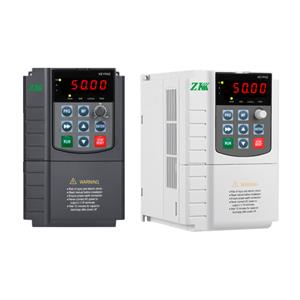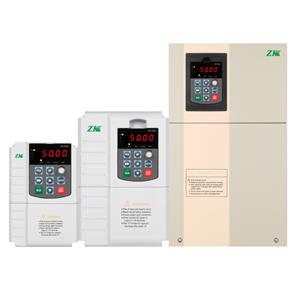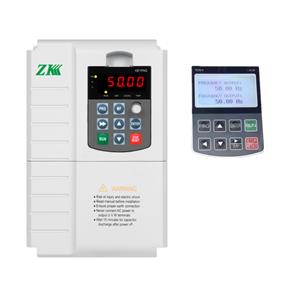Steps for debugging the solar pump inverter with load
1. Manually operate the operation stop button on the inverter panel, observe the motor running and stop process and the display window of the inverter to see if there is any abnormality.
2. If the inverter has overcurrent protection action during the process of starting and stopping the motor, the acceleration and deceleration time should be reset. The acceleration of the motor during acceleration and deceleration depends on the acceleration torque, and the frequency change rate of the inverter during the starting and braking processes is set by the user. If the moment of inertia of the motor or the load of the motor changes, when the acceleration or deceleration is carried out according to the preset frequency change rate, there may be insufficient acceleration torque, which may cause the motor to stall, that is, the motor speed is not in harmony with the output frequency of the inverter, resulting in excessive current or overvoltage. Therefore, it is necessary to reasonably set the acceleration and deceleration time according to the moment of inertia of the motor and the load, so that the frequency change rate of the inverter can be coordinated with the motor speed change rate. The method to check whether this setting is reasonable is to first select the acceleration and deceleration time according to experience and set it. If overcurrent occurs during startup, the acceleration time can be appropriately extended; if overcurrent occurs during braking, then Properly extend the deceleration time. On the other hand, the acceleration and deceleration time should not be set too long, because too long time will affect the production efficiency, especially when starting and braking frequently.
3. If the inverter is still protected within a limited time, the start/stop running curve should be changed from straight line to S-shaped, U-shaped line or reverse S-shaped, reversed U-shaped line. When the motor load inertia is large, a longer start-stop time should be used, and the operation curve type should be set according to its load characteristics.
4. If the inverter still has a running fault, try to increase the protection value of the maximum current, but the protection cannot be cancelled, and at least 10%-20% of the protection margin should be reserved.
5. If the inverter still fails, replace the inverter with a higher power level.
6. If the inverter drives the motor to fail to reach the preset speed during startup, there may be two situations:
(1) Electromechanical resonance occurs in the system, which can be judged from the sound of the motor running. By setting the frequency jump value, the resonance point can be avoided. Generally, the inverter can set the three-level jump point. When a V/f-controlled inverter drives an asynchronous motor, the current and rotational speed of the motor will oscillate in certain frequency ranges. In severe cases, the system cannot run, and even overcurrent protection occurs during the acceleration process, making the motor unable to start normally. It is more serious when the load is light or the moment of inertia is small. Ordinary inverters are equipped with frequency jumping function, the user can set the jumping point and jumping width on the V/f curve according to the frequency point at which the system oscillates. When the motor accelerates, these frequency segments can be automatically skipped to ensure the normal operation of the system.
(2) The torque output capacity of the motor is not enough. Different brands of inverters have different factory parameter settings. Under the same conditions, the load capacity is different, and the load capacity of the motor may also be different due to the different control methods of the inverter; or Due to the different output efficiency of the system, the load capacity will be different. In this case, the value of the torque boost amount can be increased. If it cannot be achieved, the manual torque boost function can be used. Do not set it too large, and the temperature rise of the motor will increase at this time. If it still does not work, a new control method should be used. For example, the Hitachi inverter adopts the method of constant V/f ratio. When the startup fails to meet the requirements, the speed sensorless space vector control method is used, which has a larger torque output. ability. For fan and pump loads, the torque reduction curve value should be reduced.
Fourth, the inverter is connected to the host computer for system debugging
After the manual basic setting is completed, if there is an upper computer in the system, connect the control line of the inverter directly to the control line of the upper computer, and change the operation mode of the inverter to terminal control. According to the needs of the host computer system, set the range of 0-5V or 0-10V of the frequency signal terminal received by the inverter, and the response speed of the inverter to the sampling of the analog frequency signal. If another monitoring meter is required, the monitoring value of the analog output should be selected, and the range of the output monitoring value terminal of the inverter should be adjusted.




